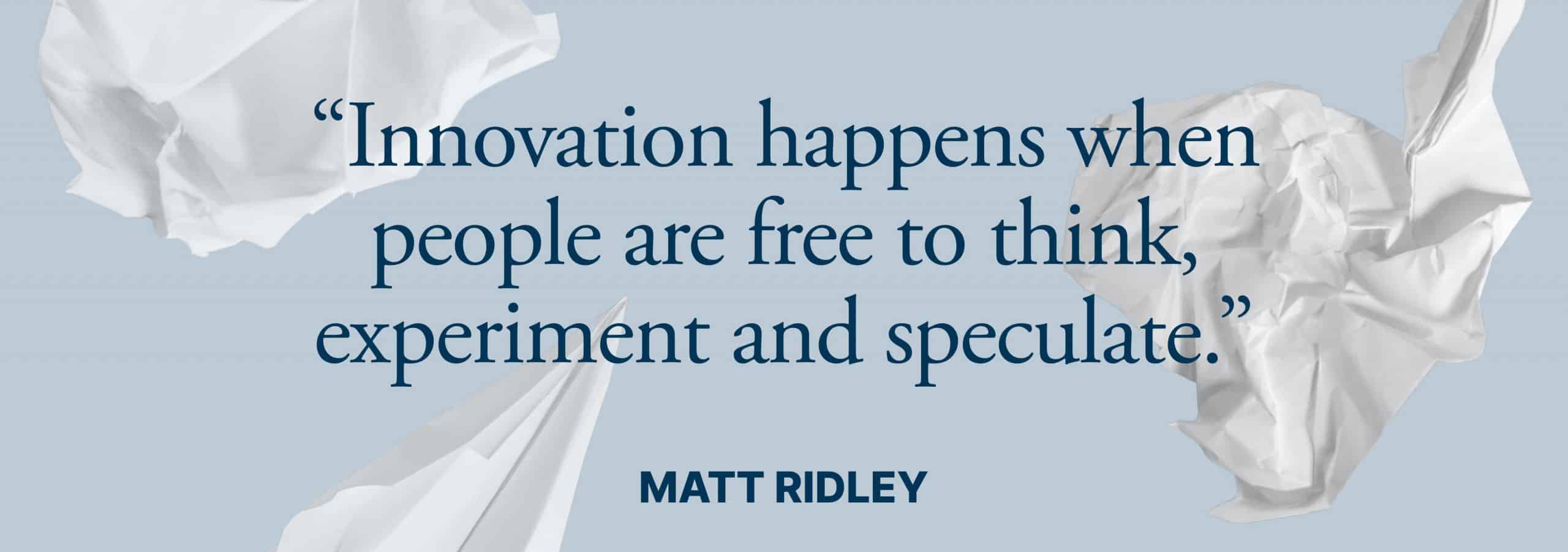
To best support the future of Design and Technology teaching with products, resources, and solutions we need to travel forwards in time and plan for what that framework, curriculum and associated spaces might look like…
WF Education has a network of colleagues, teachers, technicians, and industry collaborators. We invited a number of these connections to write freely on the subject ‘The Future of D&T’ – the resulting blog series will provide insights from across the sector.
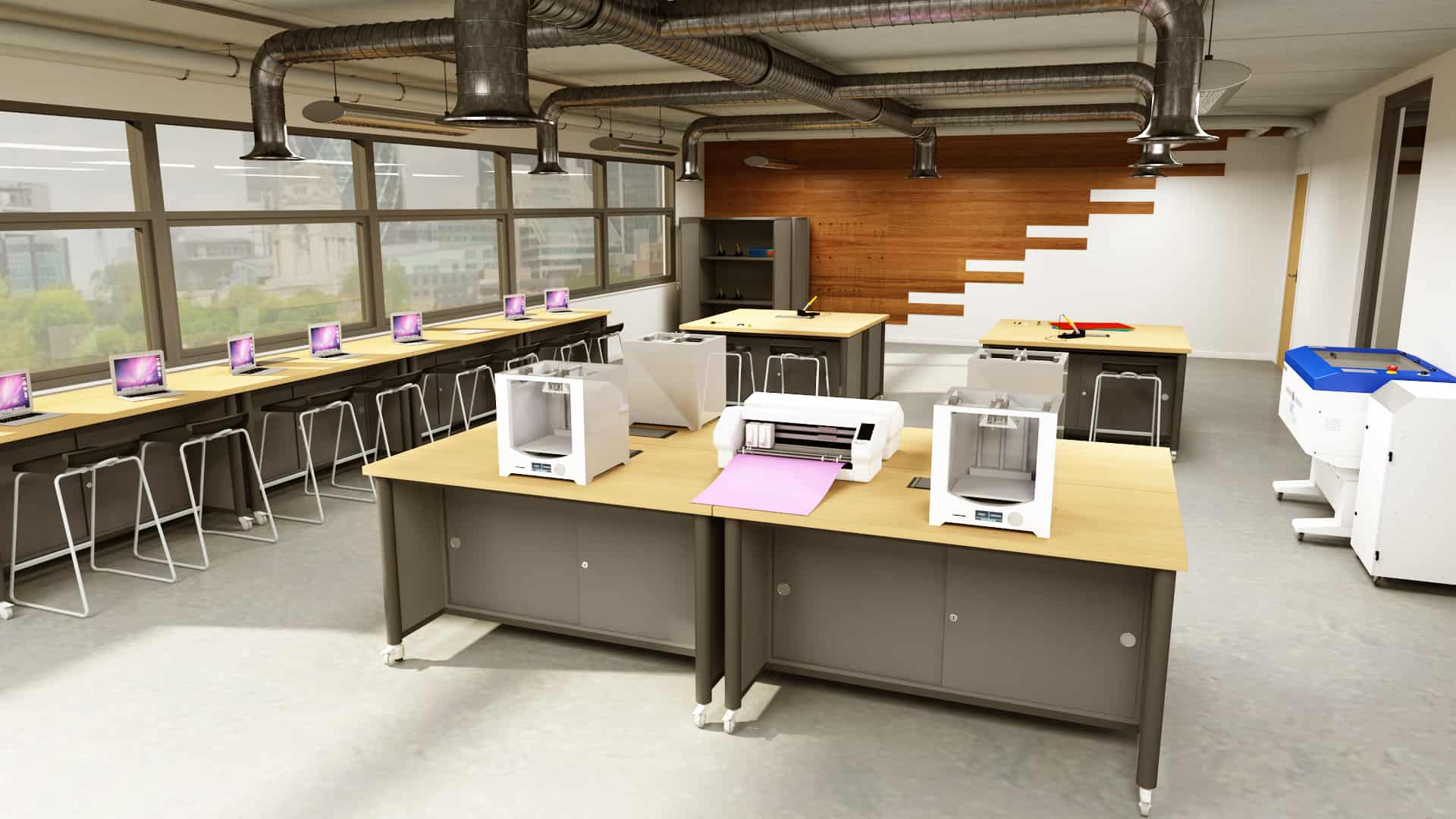
The title of this blog is a play on T.H. White’s retelling of Arthurian legends in the Once and Future King series. As I reflect on the future of design and technology (D&T), I recall of the subject’s meteoric rise to fame in the National Curriculum at the start of the closing decade of the twentieth century. Within 15 years a steady decline began, as evidenced in falling GCSE entries from 2004 when the subject lost its compulsory status at Key Stage 4.
Lady Parkes’ introduction to the final report from the National Curriculum Design and Technology Working Group stated: “The aim of our proposals for design and technology is to prepare pupils to meet the needs of the 21st Century: to stimulate originality, enterprise, practical capability in designing and making and the adaptability needed to cope with a rapidly changing society” (DES/WO, 1989). This could have been written yesterday but was over three decades ago! At the time D&T was a new subject, emerging out of the traditionally gendered craft disciplines (such as woodwork and cookery), drawing together practice from art and design, business studies, craft design and technology (CDT), home economics and information technology (IT).
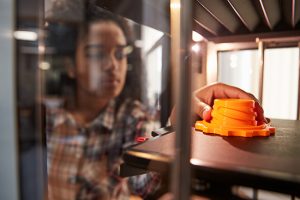
Despite the intention that teachers from these subjects would collaborate to deliver this dynamic new subject, the early years if National Curriculum saw a change from a sprawling multidisciplinary subject to, what on the surface, appeared to be a more scaled-back and unified approach.
In the second National Curriculum orders of 1995, gone were reference to business studies, CDT, and home economics, and both art and design and IT had their own programmes of study. In the intervening years, D&T has gone through a sometimes painful and at other times ecstatic adolescence.
Perhaps one of the key areas where this has been evident is the role of materials (including components and ingredients), with new areas being invented in the curriculum. I mean, ‘resistant materials’ (RM) and ‘graphic products’ (for example) – what are they?! Talk about either outside of the school D&T community, and you get blank looks. These somewhat arbitrary delineations reflected more of D&T’s precursors and the comfort zones of those of us who taught at the time – and possibly, more importantly, those who had the power to shape the curriculum at examination level. The origins of RM are in the reference to so-called resistant and compliant materials in the national curriculum where resistant became (simplistically) redefined as woods, metals, and plastics, and compliant as textiles, paper, and boards.
I would argue that the alienation of many D&T teachers, based on their perceived specialism, was in part a result of a failure of the community to understand and articulate the uniting factors that the subject was based on. This includes, but are not limited to:
- Designing solutions to real problems
- Problem finding and problem-solving
- Creativity and risk-taking
- Understanding contexts, needs and wants
This is not to say that knowledge of specific materials and how to shape, combine and work with them is not important (it is!), but it is not what is at the heart of D&T (re-read the Lady Parkes quote above). Rather, materials are the medium through which we realise our ideas, our design solutions, and prototypes.
Remember, most of the children who learn D&T are not going to become designers, technologists, engineers, etc. However, all children can learn how to apply knowledge, solve problems, research techniques, develop skills and become resilient through design and make projects. This is more than learning a different way of thinking, it is also learning how to act.
By 2013, we had a change in government and were in the process of curriculum reform. Again! This time we experienced a significant schism, with indications that the Department for Education was seeing food education as something separate to D&T, evident in the division of the 2014 programme of study with a separate section for cooking and nutrition. This was further compounded when the decision was made that food could not be a D&T material in the new GCSEs, with a separate GCSE food preparation and nutrition qualification. As a result, food education has one foot in D&T and one foot outside, with many schools aligning food with other curriculum areas, such as science.
Whilst I understand that there are reasons for some aspects of food education being somewhat at odds with the aims of D&T (e.g., addressing the obesity crisis), this felt like it was done to rather than with the subject. Furthermore, many schools had already begun to transition from teaching textiles under art and design at GCSE. In some cases, this was a decision imposed on teachers and others a conscious decision; either to reduce the perceived overlap between the two subjects or to improve grade outcomes.
 Today, we find ourselves still amid the COVID-19 pandemic, facing yet another challenge to D&T. Social distancing protocols mean that we must rethink, with access to the tools and equipment – so crucial to our practical subject – limited at best or impossible in many cases. The proposed changes to examinations in 2021 from Ofqual state that “there is no longer a requirement for the production of a full prototype which will allow teachers to make the best use of teaching time” – the million-dollar question being: What is the best use of teaching time in D&T?
Today, we find ourselves still amid the COVID-19 pandemic, facing yet another challenge to D&T. Social distancing protocols mean that we must rethink, with access to the tools and equipment – so crucial to our practical subject – limited at best or impossible in many cases. The proposed changes to examinations in 2021 from Ofqual state that “there is no longer a requirement for the production of a full prototype which will allow teachers to make the best use of teaching time” – the million-dollar question being: What is the best use of teaching time in D&T?
It is proposed that mock-up be accepted in place of fully realised prototypes – fair enough, and logical in the current circumstances. However, the condescension to “permit demonstration of using machinery/tools/processes” seems to miss the point (in my opinion), where tool use is a means rather the end of D&T.
We have an opportunity to explore a ‘new’ D&T (which is possibly a return to the original aspirations for the subject) focusing on “originality, enterprise, practical capability in designing and making and the adaptability needed to cope with a rapidly changing society”. If now isn’t the time to be adaptable, I don’t know when will be, and the past 2 years may be the most changeable times in most people’s experience in the UK!
Without abandoning our knowledge, expertise, and love of materials, we need to accept that, for the time being, we have the opportunity to embrace what unites us; developing new pedagogies, which foster design thinking and digital D&T. The new GCSE reintroduced the idea of contexts to designing and making.
Rather than spending time on dry knowledge organisers or information-laden worksheets, I would encourage D&T teachers to embrace ‘mainly designing’ activities (cf. McLain, 2021), both for individual and team-based classroom (including online) activities. Foster in pupils the internal tools to find and solve problems, research real contexts and users’ needs/wants, communicate through drawing, writing, and talking, and develop resilience through extended projects. Embrace new methods like design fiction as well as rediscovering old ones. Let’s prepare for the return of ‘The Once and Future D&T’. And when COVID-19 restrictions ease we may see the role of materials and ‘specialist’ D&T knowledge in a new light. Less of a restrictive silo-mentality and more of an expansive means to a design and make end.
References
DES/WO (1989). Design and Technology for Ages 5 to 16: Proposals of the Secretary of State for Education and Science and the Secretary of State for Wales [report]. London: HMSO.
McLain, M. (2021). Key pedagogies in design and technology. In A. Hardy (Ed.), Learning to teach design and technology in the secondary school: a companion to school experience (4th Edition). Abingdon, UK: Routledge. ISBN: 9780367336813.
Ofqual (2020). Consultation decisions: proposed changes to the assessment of GCSEs, AS and A levels in 2021 [electronic document]. Available at https://www.gov.uk/government/consultations/proposed-changes-to-the-assessment-of-gcses-as-and-a-levels-in-2021
White, T.H. (1996). The Once and Future King: the complete edition. London: Harper Collins Publishers.

Matt is an experienced teacher educator, having previously taught design and technology (D&T) in two Merseyside secondary schools. He is passionate about learning, in particular pedagogy, didactics, design thinking and technological activity. As an academic, Matt has experience in educational leadership and management, as well as working as a senior lecturer, educating the next generation of teachers, as excellent practitioners, valuing social justice, leadership, and research.
Matt is also an active member and Trustee of the Design and Technology Association. As a curriculum influencer, he was involved with the redrafting of the National Curriculum (2014), advising on non-statutory guidance for the DFE’s D&T Expert Group for the new programmes of study and on the future of the subject. He has also advised on and contributed to the development of GCSE and A/AS Level Subject Criteria for design and technology.
Matt is research active and working towards PhD by Published Work, with a particular interest in signature pedagogies.
Follow Matt!
ResearchGate: profile/Matt_McLain
The External Demands on D&T:
Design & Technology is the ‘nimblest’ subject offered in schools around the world. This is evident in looking back at how many iterations have occurred in the discipline in the past 20 years. No other subject studied in schools around the world has had to ‘adapt’ more often. This flexibility gives way to an excitement that only D&T teachers can understand! Even with all the changes that have been required over the years, some things remain the same.
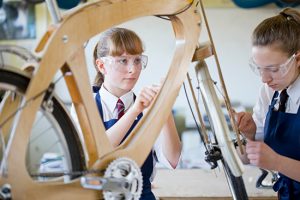
Students are still asked to follow a process, procedure, or protocol in the realization of their products and prototypes. Sketching, whether digitally or by hand, is still a compulsory part of the process.
Working with unknown materials and techniques continue to be required. Finally, students are using their hands for the ‘creation’ of their final outcome!
Personalized Pathways
When thinking about the future of Design & Technology, clearly articulated pathways for students to pursue will grow in demand from parents, students, and school leaders. The programmes of the future will be shaped by a post-COVID way of thinking and doing. Design & Technology will be expected to play a leading role in this shift to a more personalized form of education. There are several reasons that schools will be looking to D&T teachers for this.
First, as I mentioned above, Design & Technology programmes are in a constant state of change. Being excellent change managers, D&T teachers are the best people to lead this change! Just think for a minute the level of pathways an average D&T teacher has to manage on an annual basis. I know that in the past I have had a Food Design unit going on while another unit is Graphics Design and another unit being a 3D modelling unit all at the same time!
So as schools move towards an even more personalized educational model of learning for students in a post-COVID world, we, as Design & Technology teachers will be called on, not only help this change but to lead the way and mentor colleagues through the process. Are you ready for the call?

Jason Reagin is the IB Career-related Programme Coordinator at Chadwick International in Incheon, South Korea. He also teaches Design Technology to 11-18-year-olds and has done so for 20+ years in the USA, Bermuda, China, and South Korea. Jason has a passion for helping students discover their passion for careers after graduation.
You can get in touch with him on Twitter at @diskon4no or through his website: jasonreagin.ga
Finally, check out his podcast all about Design & STEAM education at: anchor.fm/design-cast-podcast
New Roads – taking a new approach to D&T education
Design and Technology – the design and make subject that challenges students to solve problems by navigating the design process, carrying out research, and developing designs and prototypes along the way. It is the subject which brings the experiences of multiple subjects together, the junction at a crossroad where knowledge and creativity come together to allow students to imagine and innovate. As educators, we aim to inspire the next generation of thinkers and creators to solve problems and innovate to help make the world a better place. This is one of the key reasons why we should take a closer look at D&T and consider ways to reimagine its impact on students and society.
‘Design and technology gives young people the skills and abilities to engage positively with the designed and made world and to harness the benefits of technology.’ Data.org.uk
I remember D&T being the subject I was most excited about when I was in school. I was one of the kids who would stay back during lunchtime, carry on with my project, and have a tinker with some of the gear to learn more. I had a great teacher who promoted design from a very pure sense, and how the simplest designs often created the most functional products, and later lead to them becoming classics. He often spoke of how creators take risks, and how design influences many aspects of the way we live our everyday lives, the best examples of design even make our lives better.
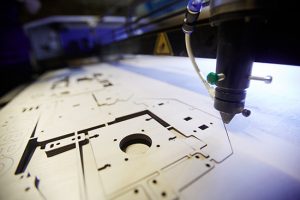
After teaching D&T in the UK for 6 years I took a bold move to take a new path on my journey as an educator and relocated to Dubai, a city that was establishing itself as a driver of tourism and innovation. When I arrived, they were building the Dubai Metro and they had constructed around 30 stories of the Burj Khalifa.
The city had developed this ‘culture of innovation’ and you could see it and feel it at every turn, pushing the envelope of design and engineering and creating new innovations to make life better. This opened my eyes to think bigger and reminded me of what I was taught back in school – designing to improve everyday life.
This ethos was reignited when the UN introduced the Sustainable Development Goals in 2015. I spent time developing real-world projects that would help students understand empathy, basic human needs, and their impact on the environment, and spoke about them at various conferences and workshops across the globe.
Imagine our students working towards current global issues, applying their thinking and creativity to solve some of the world’s greatest threats such as climate change, poverty, quality education for all, and responsible consumption. This would not only allow students to view issues through a larger global lens but provide opportunities for them to start creating solutions to improve life for the better.
I challenge you to revisit your DT projects. I challenge you to focus on ways our students cannot just design but innovate. I challenge you to take a closer look at the SDGs and allow students to solve global issues. Working in collaboration, teachers, and students can explore new roads and inspire a new way of thinking for Design and Technology. After all, isn’t that what we are here for? To inspire the next generation of thinkers and creators to solve problems and innovate, to help make the world a better place?

Evo Hannan is passionate about design and innovation in education. Innately driven by his desire to create positive change and a passion for design, Evo has utilised his 20 years of educational experience to channel into passion projects which have made an impact across the globe.
His Innovation X model curriculum helps institutions develop a sustainable culture of innovation. Through his experience in education and his network, Evo is working with teachers around the world to promote student agency under his project called The Agency which has over 150 global members.
He is also a TEDx speaker, Innovative Teacher of the Year award nominee, and the blogger and vlogger behind ‘The Innovative Teacher’ and Project.Decade on Instagram.
You can get in touch with Evo on Twitter at @EvoHannan, Instagram at @evohannan, Linked In, or through his website evohannan.com
Finally, check out Ed Talks Live, his Global Education Talk show on YouTube at youtube.com/evohannan
What is Design & Technology in 2020?
The subject has evolved considerably in recent years. The “new” Design & Technology GCSE has brought a fresh angle to the subject – focusing on a material-agnostic design process with the addition of some mathematical applications – and for those schools and students who have felt this isn’t the best pathway, WF Education has seen the popularity of GCSE-equivalent courses increase; particularly those which focus on modern design and vocational subjects such as rapid prototyping and robotics.
The link with STEM (specifically, the elements of Technology and Engineering) varies widely between schools, with some able to fully integrate a multi-subject approach into their curriculum, whilst others take a more project-based approach, often through clubs and other extra-curricular activities. Whilst the consideration of STEM allows for a broadening of design and technology applications and real-world context, the subject has an opportunity to develop students’ ‘soft’ skills in anticipation of a career in industry.
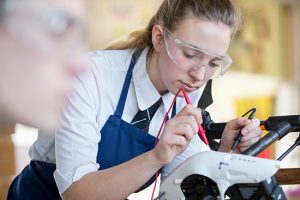
The “soft” side of STEM education…
The design process within D&T provides the most stable foundation of all departments in schools to ignite the nurturing of 21st-century skills; particularly those related to problem-solving and critical thinking, but without too much of a stretch of the imagination the structures to develop communication skills and collaborative working are well within reach.
The requirement to further develop such soft skills has not come out of the blue. Workplaces in many, if not all, industry sectors continue to evolve, and the pace of change via information technology and operational technology is becoming ever more evident as the fourth industrial revolution materialises.
The applications for big data and IIoT (“Industrial Internet of Things” – connected devices in the context of industry) means that the requirement of a human workforce will shift from the need to do things to the need to solve things – through the identification and exploitation of problems and opportunities.
The practical bit – how?
The rapid pace of change in industry places responsibility on the education community (not just schools and colleges) to prepare students for not only a successful career but also for rich and fulfilling life experiences.
At WF Education and TSL, our deign and product teams have evolved in appreciation of these situations. Our focus on D&T supplies has changed from an approach to offer as many options to D&T departments as possible to one which offers the right options; presented alongside validated advice so teachers can trust that their equipment and consumables are education-ready and fit-for-purpose.
Our Projects (installations) division remains the global leader in the provision of D&T and Engineering workshops. The success of our mobile machinery solutions continues to grow as the necessity in schools for better utilisation of space grows, and we install more D&T and STEM spaces which include flexible and modular furniture to provide zones for student collaboration and presentation.
What’s more, our workshop solutions consider the entire learning environment – the effect of comfort, noise, light, and temperature on students’ ability to develop knowledge and skills and the impact on learning outcomes and wellbeing.
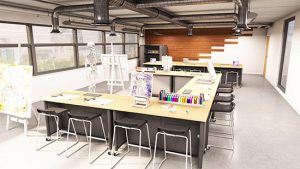
The future of D&T is optimistic… if we, in the education community, continue to understand the evolving needs of industry and students and find ways to meet both within a strong curriculum and educational approach.

Matt Evans is an Innovation Specialist working with WF Education to design educational programs, space solutions and equipment that aim to support and develop students’ soft skills in readiness for a 21st Century workplace. He has been instrumental in the development of the Akira™ range of flexible furniture for technical education.
A quick request
As part of our ongoing commitment to engaging with our customers, I am currently trying to speak to as many heads of department, teachers, and technicians as possible.
If you would be interested in sharing your experiences of Design and Technology in schools during a short interview, please contact me using the button below .


